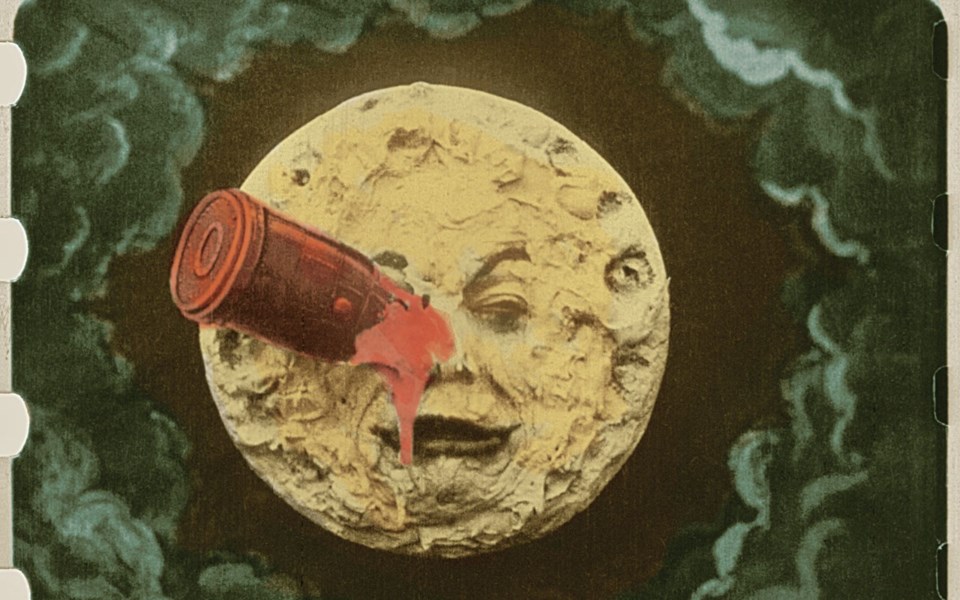If the moon is made of cheese (deep down we all secretly know it is, right?), and you only enjoy blue cheese once in a blue moon, you've got the perfect excuse to go hog wild next week.
On Jan. 31, we'll be lucky enough to witness a string of rare lunar events rolled into one like a super banana split with a cherry on top. Called a super blue blood moon eclipse, this unusual lunar event should be visible in western North America and as far as Australia. NASA bloggers say we should have a great view of the eclipse in its totality here on the west coast.
Why the posh name? This lunar eclipse happens during a super moon, which is when the moon is closest to Earth during its monthly orbit, or perigee. (January has already given us one super moon, on New Year's Day.) A total lunar eclipse is called a blood moon due to the reddish tinge the moon gets. And a blue moon happens when we have a second full moon in a month, which doesn't happen very often, ergo the saying "once in a blue moon."
As for the moon being made of cheese, that concept is a time traveller from the era of fable and myth. Various tales in various cultures describe various creatures, such as foxes or simpletons, thinking that the whitish full moon is a big round of cheese. In the 16th century, people said the moon was made of green cheese, "green" meaning young or unripened cheese, not the colour.
If you think all this moon/cheese stuff is pretty irrelevant today, Google Moon, which is way more fun to use than Google Earth, used a Swiss cheese pattern for imaging the moon before high-res images were available.
Never mind a lunar eclipse, my own moon/cheese associations spring from the famous poster for Georges Méliès' silent movie classic of 1902, Le Voyage dans la Lune (A Trip to the Moon), one of the top 100 flicks of the 20th century according to The Village Voice. In the image, a rocket has landed — splat! — in the eyeball of the man in the moon. I always think the goo dripping out of his poor eye looks like melted cheese and the moon a giant round of it.
So break out your best cheese platter for the night of the 31st and text your pals to join you for a cheesy moon show.
We cheeseheads (Canadians, for you out-of-towners) love our cheese, so no prob with the obvious main course. But this is also a great opportunity to get into the blues. Blue cheese is amazing, but I think it gets snubbed in this part of the world, more from lack of habit than lack of interest.
Blue cheeses — and there are many: Roquefort, Stilton and Cabrales from Spain, to start — aren't to be confused with green cheese. They're so-named for their characteristic blue marbling from the bacteria Penicillium roqueforti, or its cousins like P. glaucum (in Stilton and Gorgonzola) which gives them their distinctive appearance and predominant flavours, along with the goat or sheep's milk that are traditionally used.
By contrast, white strains of penicillia, P. camemberti, are, as you'd guess, white in colour and deliver equally distinctive flavours, primarily mushroom, garlic and ammonia. Camembert, Brie and Neufchâtel, white cheeses all, are made with P. camemberti and cows' milk.
Blues, as the cognoscenti call them, are ripened in caves after the milk has been innoculated with the penicillia of choice. Blue penicillia are unique because of the way they can grow in the low-oxygen fissures and holes in the cheese as it ripens. According to Harold McGee, the informed scientist behind On Food and Cooking, my go-to guide for such things, the oxygen level in those cheesy fissures is about five per cent, compared to 21 per cent in the atmosphere. The oxygen levels mimic that of the limestone caves of Larzac, France, where Roquefort cheese originated. Ewes' milk is the choice for Roquefort, and the Larzac sheep graze a strangely beautiful limestone karst landscape north of Montpellier.
With their strong peppery flavours and wonderful creaminess thanks to the action of the penicillia breaking down the fatty acids and proteins, a little bit of blue goes a long way, which is exactly why I like having them around. Pair them up with figs, walnuts, a gorgeous pear or two, grapes, apples and/or a slurrup of honey for your super blood blue moon eclipse party. They're equally at home with a good craft beer or a full-bodied red, like a Châteauneuf-du-Pape, which is located not far from those Larzac limestone caves.
Blues are also super for making an easy and delicious homemade salad dressing with your favourite base and a liberal amount of crumbled blue, Roquefort or otherwise. Gorgonzola out of Italy is especially good for cooking. Think pasta, spinach and arugula. Or branch out with some Cashel blue from Ireland for St. Paddy's Day and a pint of Guinness.
Just don't make it once in a blue moon to try your blues, or any cheese for that matter. The science is there, says McGee. It's long been recognized that eating cheese slows tooth decay, which is caused by acid secreted by relatives of a yogurt bacterium. And if you want to get really serious, Pliny the Elder, respected naturalist and author of Ancient Rome, declared that Zarathustra only became eloquent after eating nothing but cheese for 20 years.
Glenda Bartosh is an award-winning journalist who goes out of her way to get the blues.




